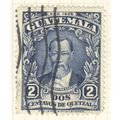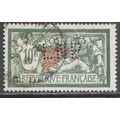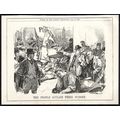Toronto, Ontario, Canada - CN Tower - postcard c.1980s
- Condition : Used
- Dispatch : 2 Days
- Brand : None
- ID# : 93649188
- Quantity : 1 item
- Views : 560
- Location : United Kingdom

- Seller : justthebook (+1703)
- Barcode : None
- Start : Sat 23 Feb 2013 15:58:50 (EDT)
- Close : Run Until Sold
- Remain : Run Until Sold
Checks/Cheques
 for 1 item(s) edit
for 1 item(s) edit
Shipping Calculator
More Listings from This Seller view all
Seller's Description
- Postcard
- Picture / Image: CN Tower, Toronto, Ontario, Canada
- Publisher: Royal Speciality Sales
- Postally used: no
- Stamp: n/a
- Postmark(s): n/a
- Sent to: n/a
- Notes / condition:
Please ask if you need any other information and I will do the best I can to answer.
------------------------------------------------
Postage & Packing:
UK (incl. IOM, CI & BFPO): 99p
Europe: £1.60
Rest of world (inc. USA etc): £2.75
No additional charges for more than one postcard. You can buy as many postcards from me as you like and you will just pay the fee above once. (If buying postcards with other things such as books, please contact or wait for invoice before paying).
Payment Methods:
UK - PayPal, Cheque (from UK bank) or postal order
Outside UK: PayPal ONLY (unless otherwise stated) please. NO non-UK currency checks or money orders (sorry).
NOTE: All postcards are sent in brand new stiffened envelopes which I have bought for the task. These are specially made to protect postcards and you may be able to re-use them. In addition there are other costs to sending so the above charge is not just for the stamp!
I will give a full refund if you are not fully satisfied with the postcard.
----------------------------------------------
Text from the free encyclopedia WIKIPEDIA may appear below to give a little background information (internal links may not work) :
*************
The CN Tower (French: Tour CN) is a 553.33 m-high (1,815.4 ft) concrete communications and observation tower in Downtown Toronto, Ontario, Canada.[3][6] It was completed in 1976, becoming the world's tallest free-standing structure and world's tallest tower at the time. It held both records for 34 years until the completion of Burj Khalifa and Canton Tower in 2010. It remains the tallest free-standing structure in the Western Hemisphere, a signature icon of Toronto's skyline, and a symbol of Canada,[7][8] attracting more than two million international visitors annually.[5][9]
Its name ""CN"" originally referred to Canadian National, the railway company that built the tower. Following the railway's decision to divest non-core freight railway assets, prior to the company's privatization in 1995, it transferred the tower to the Canada Lands Company, a federal Crown corporation responsible for real estate development. Since the name CN Tower became common in daily usage, the abbreviation was eventually expanded to Canadian National Tower or Canada's National Tower. However, neither of these names is commonly used.[10]
In 1995, the CN Tower was declared one of the modern Seven Wonders of the World by the American Society of Civil Engineers. It also belongs to the World Federation of Great Towers, where it holds second-place ranking.
The idea of the CN Tower originated when the 1968 Canadian National Railway had a desire to build a large TV and radio communication platform to serve the Toronto area, as well as demonstrate the strength of Canadian industry and CN in particular. These plans evolved over the next few years, and the project became official in 1972. The tower would have been part of Metro Centre (see CityPlace), a large development south of Front Street on the Railway Lands, a large railway switching yard that was being made redundant by newer yards outside the city. Key project team members were NCK Engineering as structural engineer; John Andrews Architects; Webb, Zerafa, Menkes, Housden Architects; Foundation Building Construction; and Canron (Eastern Structural Division).[3][4][6]
At the time, Toronto was a boom town, and the late 1960s and early 1970s had seen the construction of numerous large skyscrapers in the downtown core, most notably First Canadian Place. This made broadcasting into the downtown area very difficult due to reflections off the buildings. The only solution was to raise the antennas above the buildings, demanding a tower over 300 m (980 ft) tall. Additionally, at the time, most data communications took place over point-to-point microwave links, whose dish antennae covered the roofs of large buildings. As each new skyscraper was added to the downtown, former line-of-sight links were no longer possible. CN intended to rent ""hub"" space for microwave links, visible from almost any building in the Toronto area. The CN Tower can be seen from at least as far away as Kennedy Street in Aurora, Ontario, approximately 40 km (25 mi) to the north, 60 km (37 mi) east of Toronto, in Oshawa, and from several points on the south shore of Lake Ontario, 48 km (30 mi) to the south in New York state in the United States.[5][6]
The original plan for the tower envisioned a tripod consisting of three independent cylindrical ""pillars"" linked at various heights by structural bridges. Had it been built, this design would have been considerably shorter, with the metal antenna located roughly where the concrete section between the main level and the SkyPod lies today. As the design effort continued, it evolved into the current design with a single continuous hexagonal core to the SkyPod, with three support legs blended into the hexagon below the main level, forming a large Y-shape structure at the ground level.[6][13]
The idea for the main level in its current form evolved around this time, but the Space Deck (now named SkyPod) was not part of the plans until some time later. One engineer in particular felt that visitors would feel the higher observation deck would be worth paying extra for, and the costs in terms of construction were not prohibitive. It was also some time around this point that it was realized that the tower could become the world's tallest structure, and plans were changed to incorporate subtle modifications throughout the structure to this end
Construction on the CN Tower began on February 6, 1973 with massive excavations at the tower base for the foundation. By the time the foundation was complete, 56,000 t (61,729 short tons; 55,116 long tons) of dirt and shale were removed to a depth of 15 m (49.2 ft) in the centre, and a base incorporating 7,000 m3 (9,156 cu yd) of concrete with 450 t (496 short tons; 443 long tons) of rebar and 36 t (40 short tons; 35 long tons) of steel cable had been built to a thickness of 6.7 m (22.0 ft). This portion of the construction was fairly rapid, with only four months needed between the start and the foundation being ready for construction on top.[13]
To build the main support pillar, a hydraulically-raised slipform was built at the base. This was a fairly impressive engineering feat on its own, consisting of a large metal platform that raised itself on jacks at about 6 m (19.7 ft) per day as the concrete below set. Concrete was poured continuously by a team of 1,532 people until February 22, 1974, during which it had already become the tallest structure in Canada, surpassing the recently built Inco Superstack, which was built using similar methods. In total, the tower contains 40,500 m3 (52,972 cu yd) of concrete, all of which was mixed on-site in order to ensure batch consistency. Through the pour, the vertical accuracy of the tower was maintained by comparing the slip form's location to massive plumb-bobs hanging from it, observed by small telescopes from the ground. Over the height of the tower, it varies from true vertical accuracy by only 29 mm (1.1 in).[6][13]
type=printed postcards
theme=topographical: rest of the world
sub-theme=north america
county/ country=canada
number of items=single
period=1945 - present
postage condition=unposted
Listing Information
| Listing Type | Gallery Listing |
| Listing ID# | 93649188 |
| Start Time | Sat 23 Feb 2013 15:58:50 (EDT) |
| Close Time | Run Until Sold |
| Starting Bid | Fixed Price (no bidding) |
| Item Condition | Used |
| Bids | 0 |
| Views | 560 |
| Dispatch Time | 2 Days |
| Quantity | 1 |
| Location | United Kingdom |
| Auto Extend | No |
| City/Region | Ontario |















![Sonic The Hedgehog BBQ / Kitchen Apron [41654628]](https://pic.ebid.net/upload_small/0/5/5/1445651562-29740-3.jpg)




